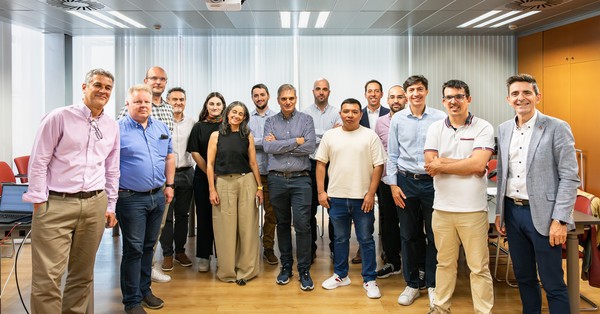Innovative Edge AI Technology Enhances Autonomous Robots’ Efficiency, Security, and Battery Life
SK Telecom has recently showcased the future of autonomous indoor robotics through a successful two-month trial of its autonomous driving robot technology. This trial was powered by SK Telecom’s advanced Telco Edge AI infrastructure, which promises to revolutionize how indoor robots perform in complex environments. Conducted at the company’s Pangyo building, located just south of Seoul, the trial focused on optimizing the performance of robots designed for indoor product transport and delivery, where high-precision positioning is paramount.
The robots used in the trial were outfitted with an array of sensors, including cameras and Inertial Measurement Units (IMUs), which enabled them to autonomously navigate the intricate layout of SK Telecom’s headquarters. These advanced sensors, coupled with sophisticated AI technology, allowed the robots to adapt to the dynamic and complex indoor environment with remarkable accuracy.
Enhanced Navigation with SK Telecom’s Visual Localization and Mapping Technology
A key component of the trial was SK Telecom’s Visual Localization And Mapping (VLAM) technology. This innovative image-based sensor fusion system was critical in supporting the stable movement of the robots in challenging indoor settings. VLAM integrates data from the robots’ sensors to create precise maps of the surroundings, enabling real-time navigation and obstacle avoidance. This technology not only enhances the robots’ ability to navigate complex environments but also opens up new possibilities for deploying autonomous robots in various industrial settings where accuracy and reliability are essential.
Telco Edge AI Infrastructure: Redefining Autonomous Robotics
The success of this trial underscores the transformative potential of SK Telecom’s Telco Edge AI infrastructure. By processing data locally at the edge, rather than relying solely on cloud-based systems, the Telco Edge AI infrastructure significantly reduces the computational burden and latency typically associated with cloud processing. This approach ensures real-time AI inference, which is crucial for the seamless operation of autonomous robots.
Moreover, the Telco Edge AI infrastructure allows for a more efficient and cost-effective deployment of vision AI capabilities. Traditional on-device AI equipment can be expensive and resource-intensive, but SK Telecom’s infrastructure offers a scalable alternative that reduces costs while enhancing performance. The ability to process data locally also enhances data security, as it minimizes the need to transmit sensitive information to centralized servers, thereby reducing the risk of data breaches.
Ryu Tak-ki, the head of SK Telecom’s infrastructure technology division, highlighted the broader implications of this successful demonstration. “This trial lays the groundwork for applying Telco Edge AI-based security technology and low-latency services across various industries,” Ryu stated. The infrastructure is expected to lower the costs associated with robot manufacturing, extend the battery life of autonomous robots, and enable the execution of complex tasks that require high-performance AI calculations.
SK Telecom’s Vision: Expanding the Reach of Autonomous Robotics
Building on the success of this trial, SK Telecom has ambitious plans to leverage its Telco Edge AI technology across multiple industries. The company is exploring the development of new business models that capitalize on the unique capabilities of its infrastructure, with a particular focus on sectors such as manufacturing, logistics, and service industries. By integrating AI with telecommunications, SK Telecom aims to drive innovation and efficiency in these sectors, enabling more intelligent and adaptable robotic solutions.
To support this vision, SK Telecom plans to establish a comprehensive testbed for evaluating and refining edge AI-based technologies, products, and services. This testbed will serve as a critical resource for ongoing research and development, allowing the company to continuously enhance its offerings and explore new applications for its technology.
Furthermore, SK Telecom is committed to fostering collaboration between telecom operators, manufacturers, and other stakeholders in the ecosystem. By working together, these entities can accelerate the adoption of edge AI technology and ensure that it meets the diverse needs of various industries.
Leading the 6G and AI Revolution: SK Telecom’s Pioneering Efforts
SK Telecom’s efforts in advancing Telco Edge AI are part of a broader strategy to lead the evolution of 6G technology. The company envisions a future where AI is seamlessly integrated with wired and wireless infrastructure, adding new value to telecommunications networks. This convergence of communications and AI will not only enhance the capabilities of autonomous robots but also pave the way for a wide range of new services and applications.
Ryu Tak-ki emphasized the importance of this vision, stating, “We will lead the evolution of 6G AI wired and wireless infrastructure by integrating communications and AI. Our focus will be on technology development, global standardization, and fostering ultra-cooperation.” By positioning itself at the forefront of 6G and AI integration, SK Telecom aims to set new standards for the industry and create a more connected, intelligent world.
Conclusion: A New Era for Autonomous Robots
The successful demonstration of SK Telecom’s autonomous driving robot technology, powered by Telco Edge AI infrastructure, marks a significant milestone in the evolution of indoor robotics. By reducing costs, enhancing efficiency, and improving data security, SK Telecom is paving the way for a new era of autonomous robots that can perform complex tasks with greater precision and reliability.
As SK Telecom continues to innovate and expand its edge AI capabilities, the potential applications for this technology are vast. From manufacturing and logistics to service industries, the integration of AI with telecommunications is set to transform how businesses operate, driving greater efficiency and creating new opportunities for growth. With its commitment to leading the development of 6G and AI integration, SK Telecom is poised to shape the future of autonomous robotics and beyond.







































